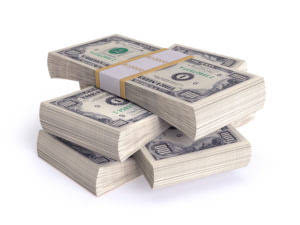
A lower WACC increases a firm’s valuation and reflects the value provided by tax shields through cheaper debt financing. The value of the tax shield depends on the amount of debt and interest expenses a company takes on, as well as the applicable tax rate. And the higher the tax rate, the more taxes are saved per dollar of interest expenses.
- The difference in EBIT amounts to $2 million, entirely attributable to the depreciation expense.
- The statement holds true until the risk of default and bankruptcy outweighs the tax shield benefits, causing the capital structure of the company to likely be in need of debt restructuring.
- It can also depend on the type of taxable expenses being used as a tax shield.
- The strategic management of assets also includes the consideration of leasing versus buying decisions.
- So most companies aim for an optimal capital structure that balances the tax shield benefits of debt financing with the costs of financial distress from taking on too much debt.
- The 2% difference makes income of $80 and another $100 is made by the return on equity capital.
- Higher EPS generally has a positive impact on a company’s stock price and valuation multiples like the price-to-earnings (P/E) ratio.
Impact of Accelerated Depreciation on the Depreciation Tax Shield
Tax evasion occurs when people intentionally fail to report their revenue or income to the proper taxing authority, such as the Internal Revenue Service (IRS). Here, Company A will carry no debt on its balance sheet (and thus have zero interest expense), whereas Company B will have $4m in interest expense. Ivory Coast, Finland, Japan, Denmark, and Austria are among the top 5 countries https://www.bookstime.com/ with the most income tax, all of them being above 50%. Saudi Arabia, United Arab Emirates, Oman, Kuwait, Qatar, and Bahrain are some examples. Many countries produce oil in the Middle East and rely on exports rather than taxes to fund their budgets. Taxes play a crucial role in helping governments finance a range of projects, including infrastructure, wars, and public works.
- The Interest Tax Shield refers to the tax savings resulting from the tax-deductibility of the interest expense on debt borrowings.
- When deciding to take a mortgage to purchase a building for their business, a tax shield will be created as a result.
- But since the WACC already factors this in, the calculation of unlevered free cash flow does NOT account for these tax savings – otherwise, you’d be double-counting the benefit.
- Integrating the depreciation tax shield into financial planning involves a nuanced approach to fiscal management.
- Accurate estimation of these components is critical, as they directly influence the timing and magnitude of the tax benefits realized by the business.
- Companies strategically use debt and the related tax shields to reduce their overall cost of capital and increase firm value.
Types of Tax Shields: Interest, Depreciation, and More
- A tax shield is a legal way for individual taxpayers and corporations to try and reduce their taxable income.
- Tax shields aren’t always easy to implement and it may not be clear to the average taxpayer how to get started.
- Taxpayers can recoup some losses related to the depreciation of qualified property by using the depreciation deduction.
- The term “tax shield” references a particular deduction’s ability to shield portions of the taxpayer’s income from taxation.
Overall, analyzing how tax shields enhance cash flows, reduce WACC, boost EPS, and ultimately increase firm value is critical for accurate business valuation. Their tangible financial benefits directly translate to higher equity value. In other words, Company A can deduct $800,000 of interest expenses from its taxable income.
Calculating Tax Shields: Formulas and Applications
A tax shield is a way for individual taxpayers and corporations to reduce their taxable income. This happens through claiming allowable deductions like medical expenses, charitable donations, or mortgage interest. Depreciation serves as a pivotal tool in the strategic management of a company’s financial health. It is not merely an accounting practice but also a significant element in tax planning, offering businesses a way to shield income from taxes and thereby optimize cash flows.
Recap of Corporate Tax Shield Advantages and Strategic Importance

It only benefits you to itemize when the total of all of your deductions exceeds the standard deduction for your filing status. A tax shield refers to reductions in taxable income that result from taking allowable deductions. A key example is interest expenses tax shield accounting on debt – since interest is tax deductible, taking on debt creates a “tax shield” effect. The two main forms of tax shields stem from interest expenses and depreciation. Depreciation spreads out capital expenditures over the useful life of assets.
It is crucial to consider the impact of any short-term variations in depreciation and capital cost allowance. Donating to charity might lessen one’s tax liabilities, much as the tax break provided as reimbursement for medical expenditures. The taxpayer must claim itemized deductions on his tax return to be eligible. Cosmetic surgery, health club or gym dues, diet food, and over-the-counter medications are examples of non-eligible medical costs (except insulin). Only costs paid out of pocket for medical care during the current tax year are deductible.
Tax Shield: Definition, Formula for Calculation, and Example
